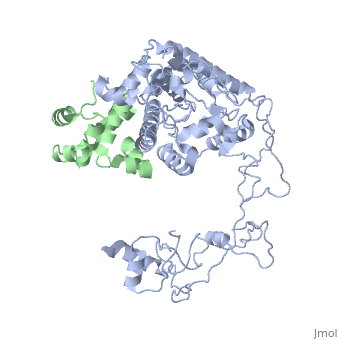UV excision repair protein: Difference between revisions
Jump to navigation
Jump to search
Michal Harel (talk | contribs) No edit summary |
Michal Harel (talk | contribs) No edit summary |
||
| Line 3: | Line 3: | ||
== Function == | == Function == | ||
'''UV excision repair protein''' (Rad23) is a yeast protein involved in nucleotide excision repair. The human homologs are '''hHR23A''' and '''hHR23B'''. hHR23A plays a role in translocating polyubiquitinated proteins to the proteasome. | '''UV excision repair protein''' ('''Rad23''') is a yeast protein involved in nucleotide excision repair. The human homologs are '''hHR23A''' and '''hHR23B'''. hHR23A plays a role in translocating polyubiquitinated proteins to the proteasome. | ||
== Structural highlights == | == Structural highlights == | ||
Revision as of 10:23, 17 March 2024
FunctionUV excision repair protein (Rad23) is a yeast protein involved in nucleotide excision repair. The human homologs are hHR23A and hHR23B. hHR23A plays a role in translocating polyubiquitinated proteins to the proteasome. Structural highlightsThe protein contains a modular domain structure consisting of ubiquitin-like domain, ubiquitin-associated domain and XPC (xeroderma pigmentosum group C protein)-binding domain[1].
|
| ||||||||||
3D Structures of UV excision repair protein3D Structures of UV excision repair protein
Updated on 17-March-2024
ReferencesReferences
- ↑ Chen YW, Tajima T, Agrawal S. The crystal structure of the ubiquitin-like (UbL) domain of human homologue A of Rad23 (hHR23A) protein. Protein Eng Des Sel. 2010 Nov 3. PMID:21047872 doi:10.1093/protein/gzq084
